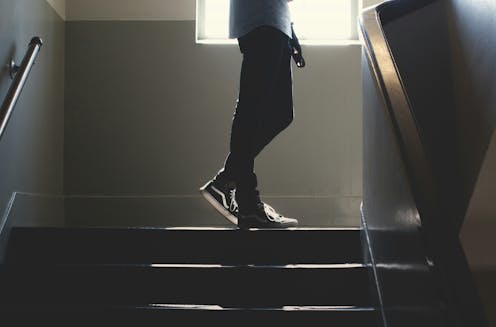Expelling students for bad behaviour seems like the obvious solution, but is it really a good idea?
- Written by Linda J. Graham, Professor and Director of the Centre for Inclusive Education, Queensland University of Technology

Two male students have been expelled[1] from a Melbourne private school for their involvement in a list ranking female students.
The two were part of a group of four high school students suspended from Yarra Valley Grammar last Friday, after sharing a spreadsheet of photos of female classmates, ranking them with terms including “wifeys”, “cuties” and “unrapable”.
As principal Mark Merry said in a letter[2] to parents on Tuesday, he had “formed the view” the position of two of the students had “become untenable”. The two other students who played a “lesser role” will face “disciplinary action”. The school is offering wellbeing support to the girls who were targeted.
Earlier this week, the suspensions were met with approval from Education Minister Jason Clare who told the ABC[3], “I’m glad the school’s fronting up. I think that they’ve taken the sort of action that the community would expect”.
Expelling or suspending students for this kind of behaviour seems like the obvious course of action. But is it a good idea?
Why do schools suspend or expel students?
Suspending or expelling a student is meant to be a last resort[4] for serious problem behaviour. It is either supposed to allow space for a reset or as a consequence for behaviour which threatens other students’ safety or learning.
In the case of Yarra Valley Grammar, the suspensions and expulsions send a message to the girls in the school, other students, parents and the broader public this behaviour is not tolerated.
With so much media and public attention on the spreadsheet, the suspensions and expulsions also help protect the reputation of the school.
Clearly there has been some horrendous behaviour and it does need to have a stern response. But without condoning the behaviour in any way, kicking these students out of school is not the best way to handle this situation, which is a symptom of a much bigger problem.
What does the research say about suspensions and expulsions?
Typically, when a student is expelled, the outcomes are not positive[5] for that child.
This is because expulsion is a punitive action, not an educative one.
Research shows suspending and expelling students can also simply build resentment and anger. If students feel like they are rejected from society[6], there is a risk they become more extreme in their views or behaviours.
Research also shows it can impact a young person’s learning[7] and lead to leaving school early. We also know there is an association between suspension and expulsion and increased delinquency[8], including contact with the police[9].
The most protective thing[10] to do is to keep young people in schools where they can be exposed to the influence of positive peers, under adult supervision, with a chance to keep up with their learning.
What could happen instead?
This is not to say students should just be told to go back to class as if nothing has happened.
With the help of experts like psychologists, schools can engage in a restorative justice process[11]. This is about helping young people understand the real impact of their actions.
There can often be an assumption young people act with full knowledge of the consequences of what they are doing. But parts of their brain involving control and self regulation are still developing[12] into adulthood.
Experts can work with students so they can learn their actions were not harmless fun with their mates but something that hurts others.
An example of how this can be done is through giving those students “inquiry projects[13]” where they investigate similar incidents and present their findings to their peers. The emphasis is on an educative response that builds empathy and understanding in that young person.
The school could also ask the female students included in the spreadsheet to express through their choice of medium how it made them feel.
One criticism of this process is it requires the victims to engage in emotional labour when they have already experienced harm. But when a restorative justice process is done well[14], it can give the victims a voice and public acknowledgement of the wrong they have experienced.
Those victims can also receive an apology if they want it. That apology is likely to be more meaningful if the perpetrator has learnt something of the effect of their behaviour.
Importantly, the aim of a restorative justice process is not to dispense “justice”. It is to restore peace, to heal harms done and to prevent future harms from occurring through better understanding.
Given the Yarra Valley Grammar “list” is the latest episode in a string of incidents[15] involving misogynistic behaviour by male students[16], it is time we tried something different.
References
- ^ have been expelled (www.news.com.au)
- ^ said in a letter (www.smh.com.au)
- ^ who told the ABC (ministers.education.gov.au)
- ^ last resort (theconversation.com)
- ^ outcomes are not positive (www.journals.uchicago.edu)
- ^ rejected from society (onlinelibrary.wiley.com)
- ^ impact a young person’s learning (www.tandfonline.com)
- ^ delinquency (www.tandfonline.com)
- ^ police (www.sciencedirect.com)
- ^ protective thing (www.mdpi.com)
- ^ restorative justice process (eric.ed.gov)
- ^ still developing (www.nature.com)
- ^ inquiry projects (link.springer.com)
- ^ done well (journals.sagepub.com)
- ^ string of incidents (www.news.com.au)
- ^ misogynistic behaviour by male students (www.sbs.com.au)














